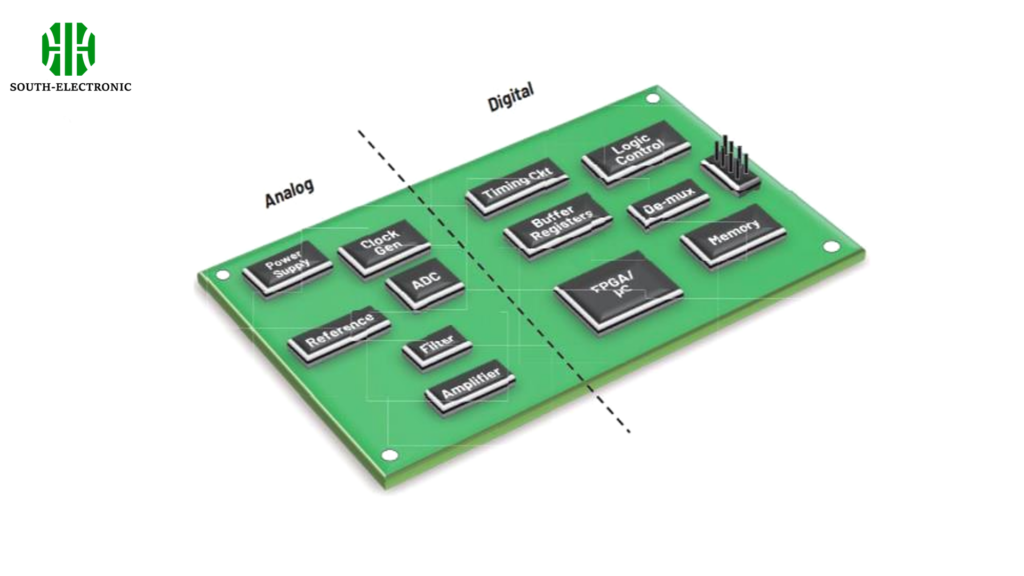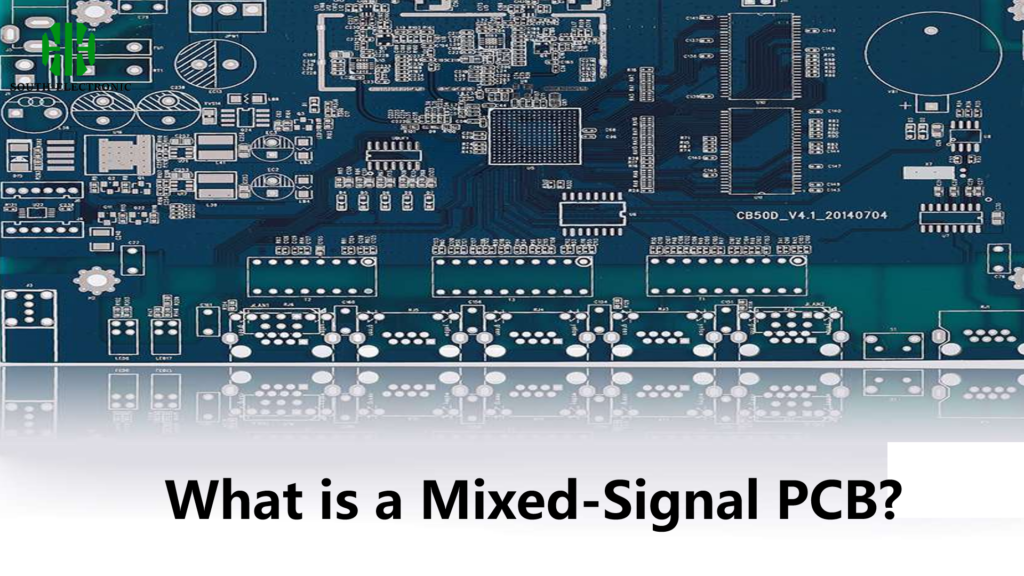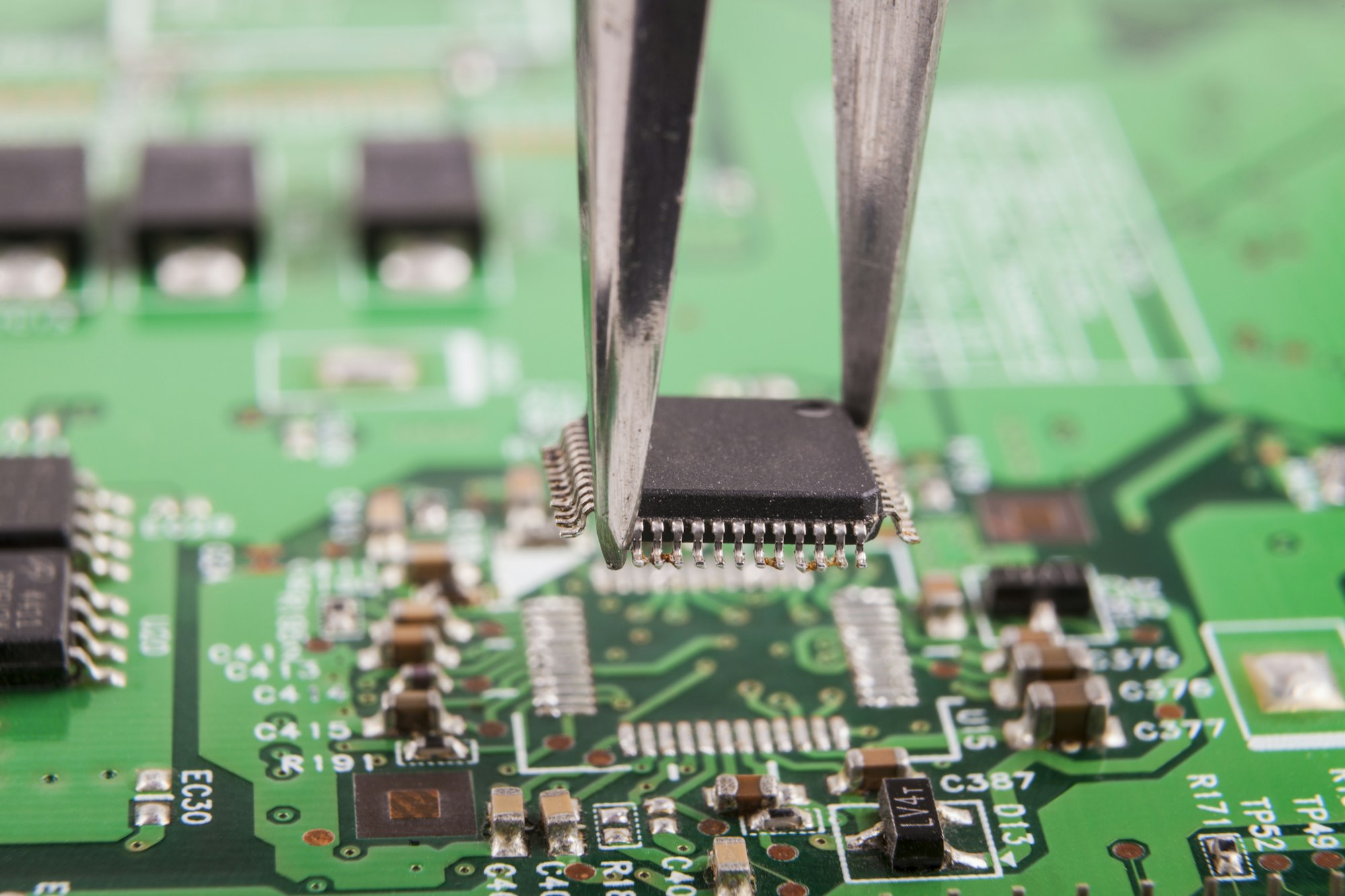What is a Mixed-Signal PCB?
Mixed signals in a PCB refer to the combination of analog and digital signals on the same circuit board. Analog signals vary continuously, like sound waves, while digital signals are either on or off, like computer data. This lets the board handle a wide variety of tasks, such as playing music and running apps on a smartphone.
Key Design Guidelines for Mixed-Signal PCB
- Isolation Between Sections: It’s critical to maintain isolation between digital and analog sections to prevent signal interference. This involves physical separation and dedicated routing channels on the PCB.
- Controlled Impedance and Grounding: It’s crucial to have controlled impedance and a consistent ground system throughout the board to minimize signal distortion and interference.
- Use of Advanced Tools: Using modern PCB design software like Altium Designer makes it easier to do controlled impedance routing, impedance matching, and manage the ground plane layout effectively.
- Partitioning: Designing the PCB with clear partitions between different functional blocks can help minimize crosstalk and electromagnetic interference (EMI), preserving signal integrity.
- Strategic Layer Stack-up: Using modern PCB design software like Altium Designer makes it easier to do controlled impedance routing, impedance matching, and manage the ground plane layout effectively.

What Differentiates a Mixed-Signal PCB Design from Purely Analog Board and Purely Digital System?
Here’s a table summarizing the differences between mixed-signal PCBs, purely analog boards, and purely digital systems:
| Feature | Mixed-Signal PCB | Purely Analog Board | Purely Digital System |
|---|---|---|---|
| Signal Type | Combines both analog and digital signals | Only analog signals | Only digital signals |
| Functionality | Can process and integrate data from both signal types | Specialized in processing varying continuous signals | Handles binary data processing |
| Complexity | High due to the need to manage interference between signals | Moderate, focuses on signal integrity and noise reduction | High, often involves complex data operations and algorithms |
| Applications | Smartphones, IoT devices, medical instruments | Audio equipment, sensor technology | Computers, digital watches, digital communication devices |

Conclusion
When you need to process precise data and manage continuous signals, like in audio processing equipment, mixed signal PCBs are great. As technology keeps getting better, mixed signal PCBs are going to be more important and used more often. This will lead to more creative and integrated electronic designs.



